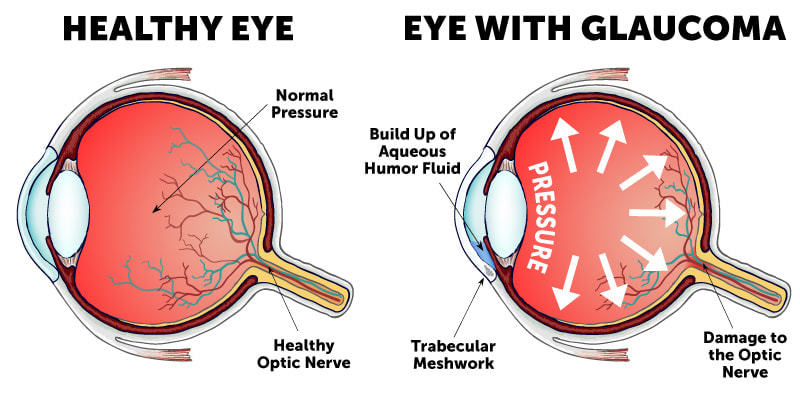
Glaucoma is the term applied to a group of eye diseases that gradually result in loss of vision by permanently damaging the optic nerve, the nerve that transmits visual images to the brain. The leading cause of irreversible blindness, glaucoma often produces no symptoms until it is too late and vision loss has begun.
Treatments and drugs
- The damage caused by glaucoma can't be reversed. But treatment and regular checkups can help slow or prevent vision loss, especially in you catch the disease in its early stage.
- The goal of glaucoma treatment is to lower pressure in your eye (intraocular pressure). Depending on your situation, your options may include eye drops, laser treatment or surgery.
Eye drops
Glaucoma treatment often starts with prescription eye drops. These can help decrease eye pressure by improving how fluid drains from your eye or by decreasing the amount of fluid your eye makes.
Prescription eye drop medications include:
(Isopto Carpine). Side effects include smaller pupils, possible blurred or dim vision, and nearsightedness.
Oral medications
If eye drops alone don't bring your eye pressure down to the desired level, your doctor may also prescribe an oral medication, usually a carbonic anhydrase inhibitor. Possible side effects include frequent urination, tingling in the fingers and toes, depression, stomach upset, and kidney stones.
Surgery and other therapies
Other treatment options include laser therapy and various surgical procedures. Possible complications include pain, redness, infection, inflammation, bleeding, abnormally high or low eye pressure, and loss of vision. Some types of eye surgery may speed the development of cataracts.
You'll need to see your doctor for follow-up exams. And you may eventually need to undergo additional procedures if your eye pressure begins to rise or other changes occur in your eye.
The following techniques are intended to improve the drainage of fluid within the eye, lowering pressure:
Your doctor may suggest a minimally invasive procedure to remove tissue from the trabecular meshwork using a small electrocautery device called a Trabecutome.
Treating acute angle-closure glaucoma
Acute angle-closure glaucoma is a medical emergency. If you're diagnosed with this condition, you'll need urgent treatment to reduce the pressure in your eye. This generally will require both medication and laser or other surgical procedures.
You may have a procedure called a laser peripheral iridotomy in which the doctor creates a small hole in your iris using a laser. This allows fluid (aqueous humor) to flow through it, relieving eye pressure.
All sorts of Glaucoma tests, procedures and surgeries are available in our center that "Niramay" Indore India Eye Care. Please contact us